Huntington Gardens And Library (11/30/2010)
They had a members-only Christmas activity so we decided to go and also have high-tea around 5:00! Great fun!
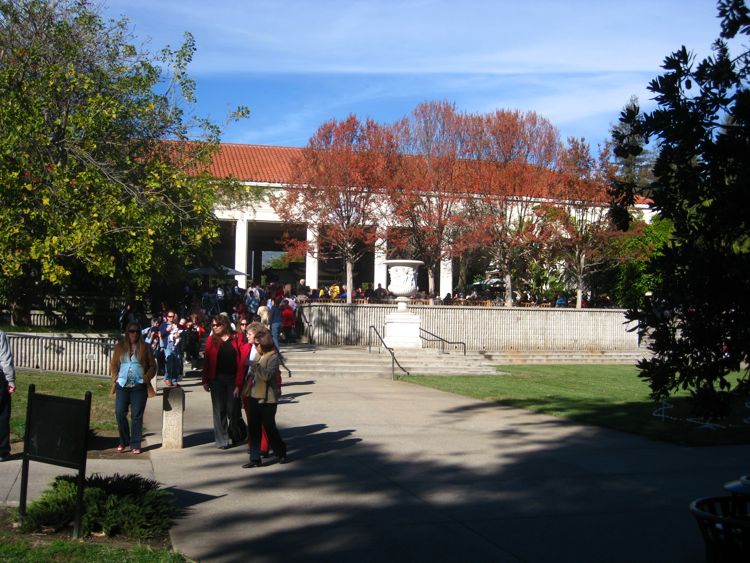
Magnificent day!
We Headed To The Cactus Gardens
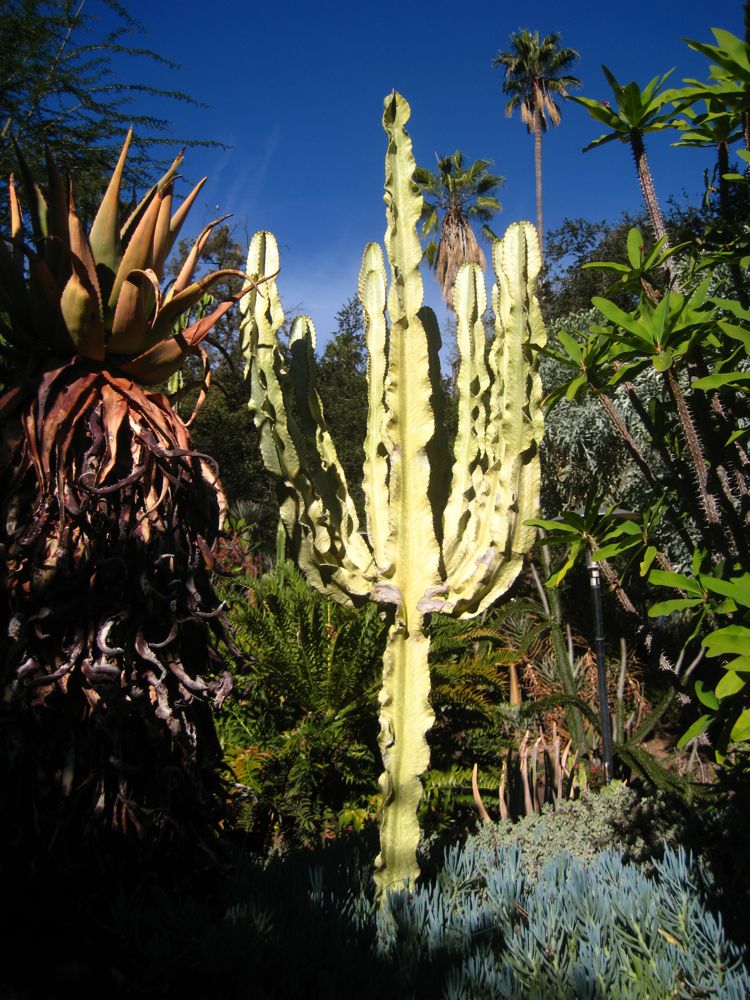
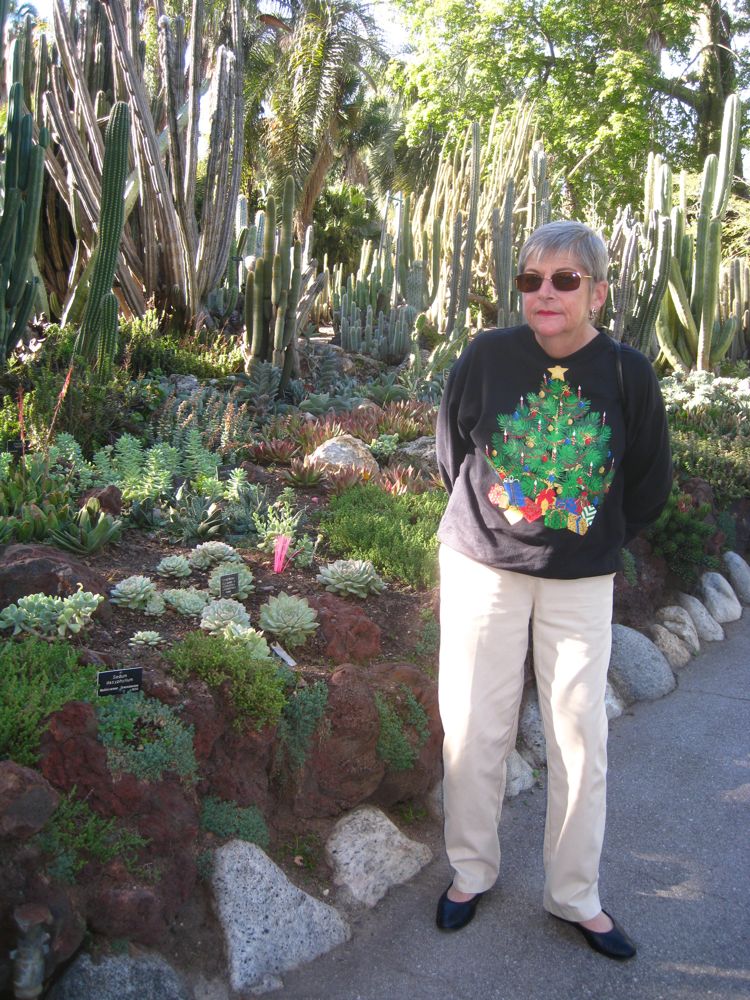

Did you know? - Silver torch or Wooly torch cactus (Cleistocactus strausii) is a succulent of family Cactaceae. It is native to high mountain regions of Bolivia and Argentina.
Its slender, erect, grey-green columns can reach a height of 3 m (10 ft), but are only about 6 cm (2.5 in) across. The columns are formed from around 25 ribs and are densely covered with areoles, supporting four yellow-brown spines up to 4 cm (2 in) long and 20 shorter white radials.
The cactus prefers free draining soils, strong sunlight, but not high temperatures — in fact it can withstand hard frosts down to -10°C. In its natural habitat it receives plenty of water during the summer, but almost none over the winter. In cultivation, watering too much in winter often leads to root rot.
Older cactuses, over 45 cm (18 in) tall, produce deep red, burgundy, flowers in late summer. The 6 cm (3 in) long cylindrical flowers protrude horizontally from the columns. In common with other cacti in the genus Cleistocactus, the flowers hardly open, with only the style and stamens protruding. Cultivated plants often flower freely.

I won the beauty contest!

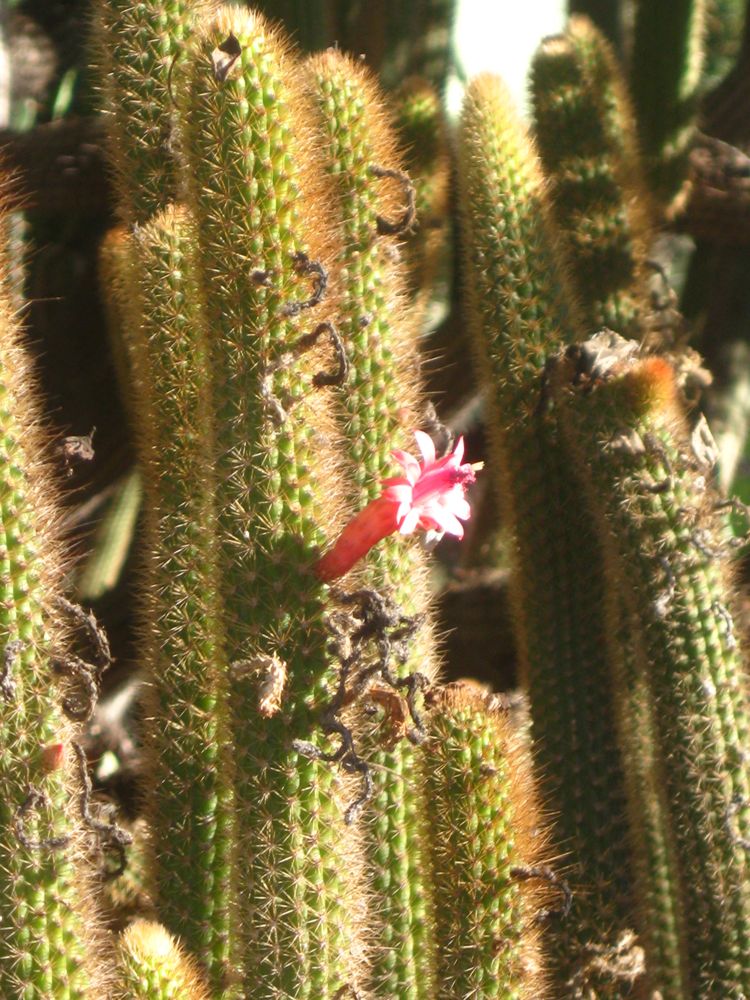
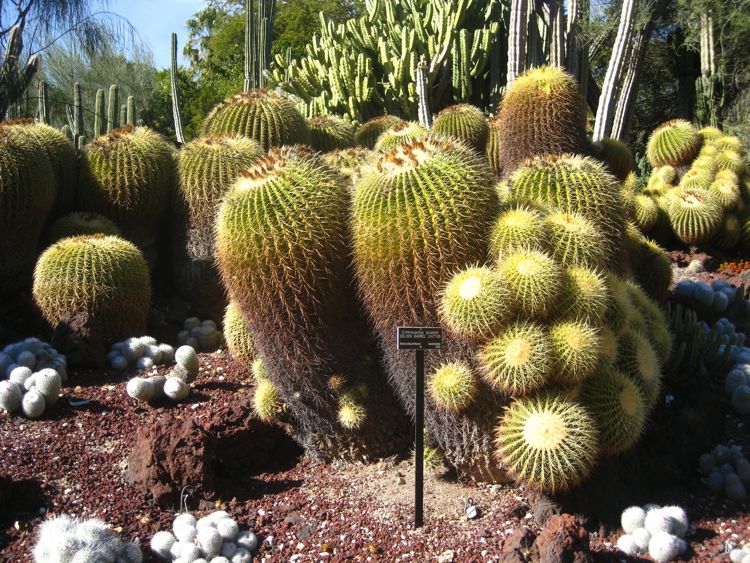
Recent rains made the barrels full!
Did you know? - The barrel cactus is a member of the plant family Cactaceae, characterized by being approximately barrel-shaped. Barrel cacti are classified into the two genera Echinocactus and Ferocactus, both of which are found in the Southwest Desert of North America. Their pineapple-shaped fruits can be easily removed but are not recommended for eating. The barrel cactus may reach over a meter in height. Its ribs are numerous and pronounced and the spines are long and yellow. Small yellow flowers appear around the end of the plant only after many years. It is considered easy to grow and relatively fast growing. They may also produce round offshoots from the main stem, called pups.
The Seri Indians distinguished three species of barrel cactus:[1] mojepe siml ( 'saguaro barrel cactus', Ferocactus acanthodes), siml caacöl ('big barrel cactus', Ferocactus covillei) and siml áa ('true barrel cactus', Ferocactus wislizenii). The species F. covillei also had several other names. The species Ferocactus covillei was also called siml cöquicöt, 'killer barrel cactus', to indicate that it should not be eaten or its liquid consumed.
Many people mistakenly believe that the common sight of a tipped over barrel cactus is due to the cactus falling over from water weight. Actually, barrel cacti fall over because they grow towards the sun, just like any other plant. Unlike other plants, however, the barrel cactus usually grows towards the south (to prevent sunburn), hence the name "compass cactus."
The barrel cactus is the last of the cacti to bloom in the calendar year. When it does bloom, a bright orange flower appears. The flower yields to a yellow small pineapple-shaped fruit.
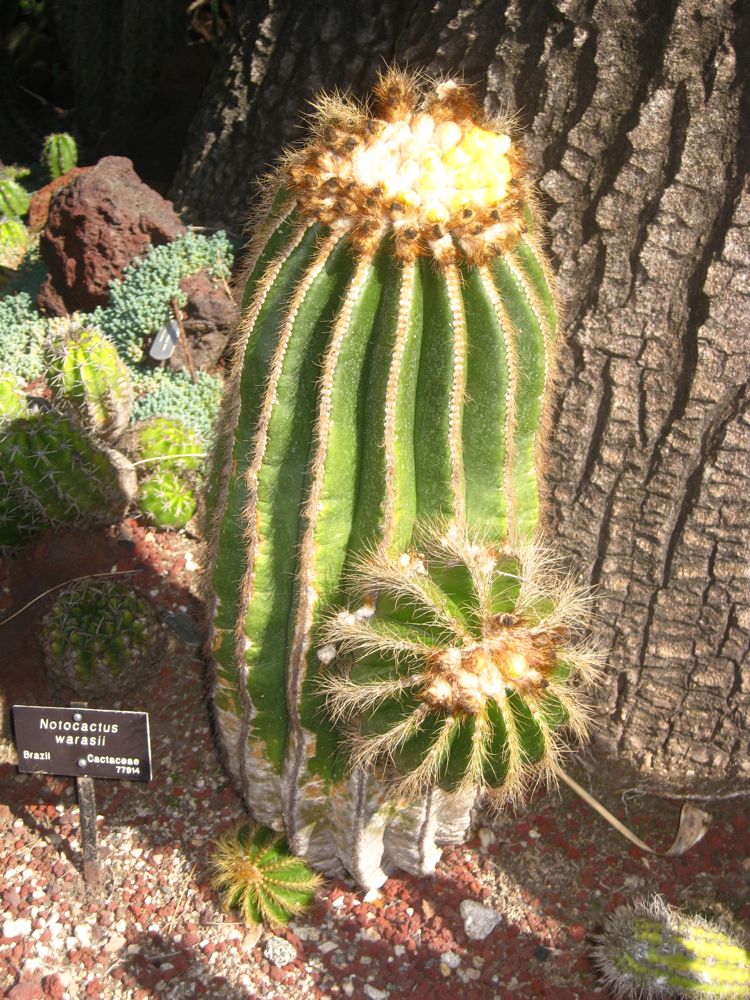
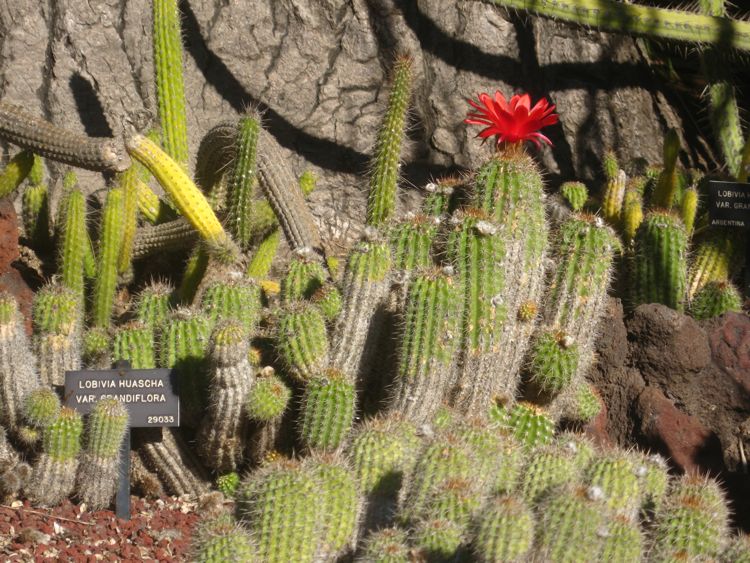
Nice red hat

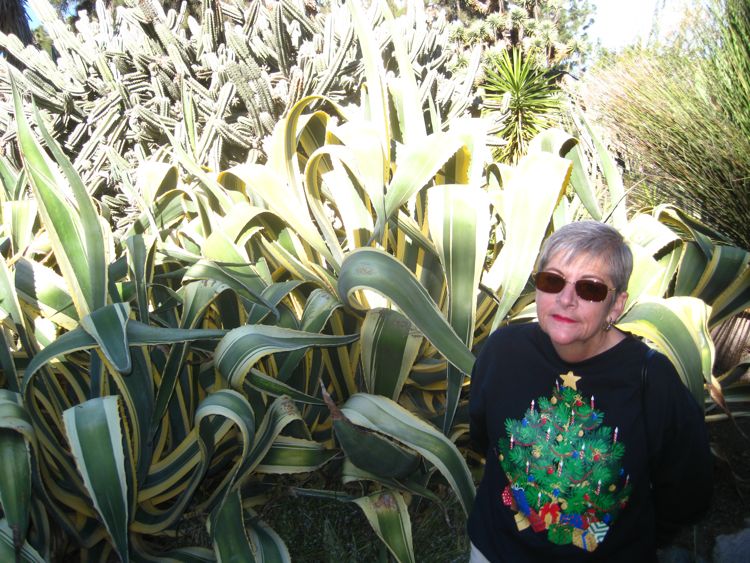
These plants were big!!!
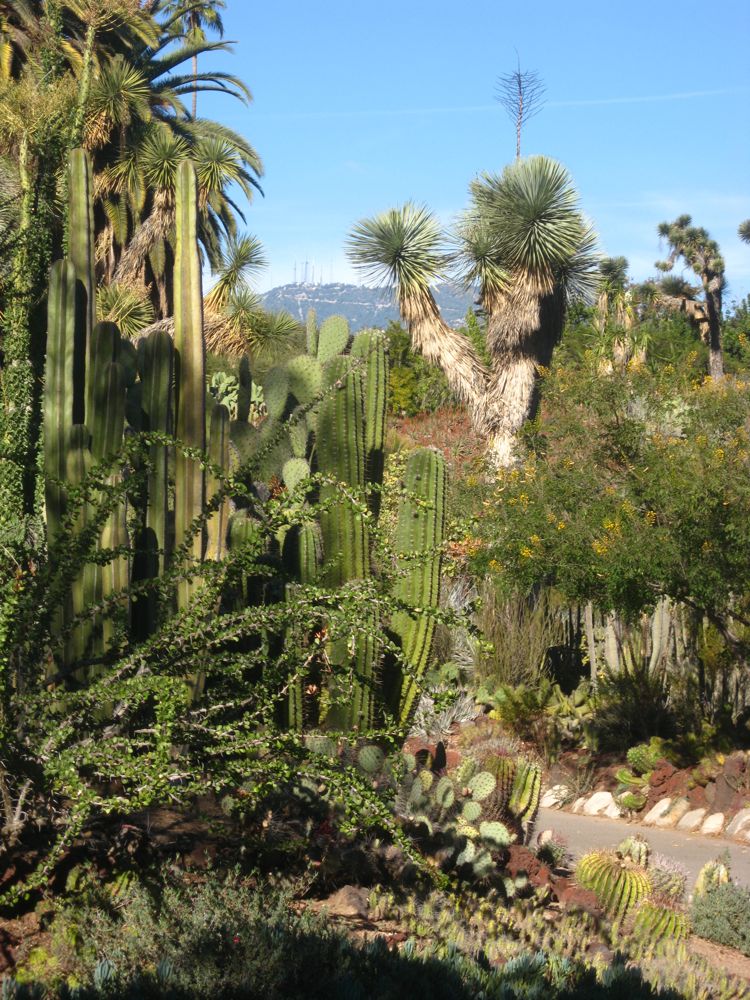
Mount Wilson in the distance
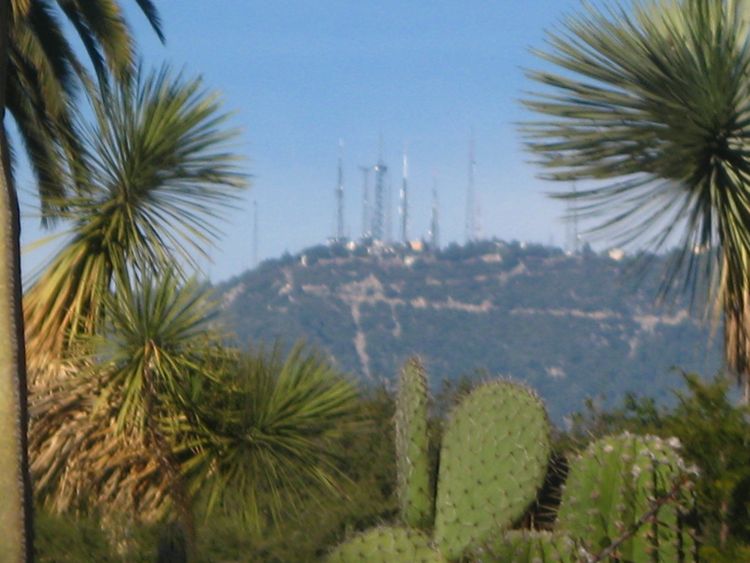
Mount Wilson in the background
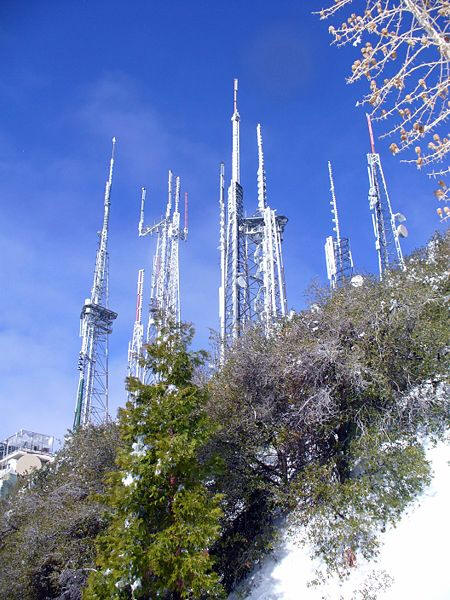
A real antenna farm
Did you know? - The first antenna on Mount Wilson was installed in 1948. The mountain became so popular as a site for transmiters that, in 1963, the Metromedia company bought 720 acres (2.9 km2) from the Mount Wilson Hotel Company. Metromedia built Skyline Park which consisted of a pavilion, a children's zoo and landscaped walks.The park closed in 1976 after operating at a loss for almost a decade.
The property is now the home of numerous transmitters serving the Los Angeles metropolitan area and includes radio, television and microwave relay facilities. The tallest of which, according to the FCC database, is the guyed mast, formerly home of KCBS-TV, now operated by Richland Towers, which stands at a height of 972 feet (296.3 m), built in 1986.
Cactus Behind Us And Australia Ahead
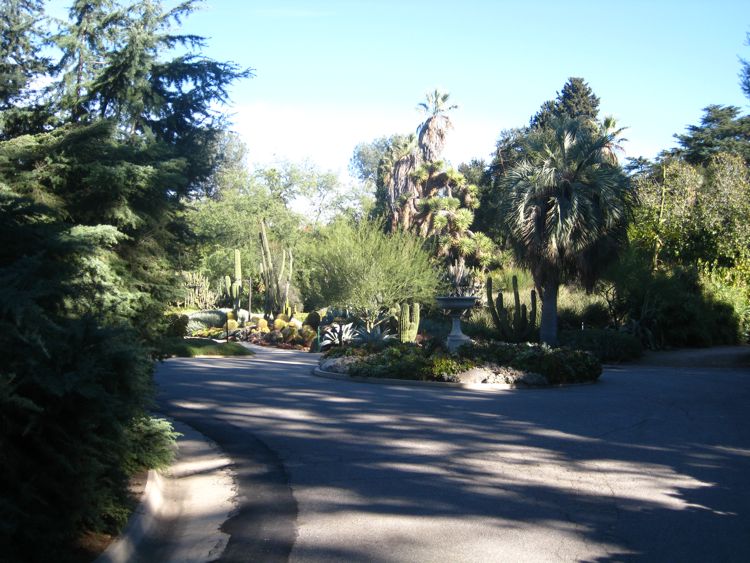
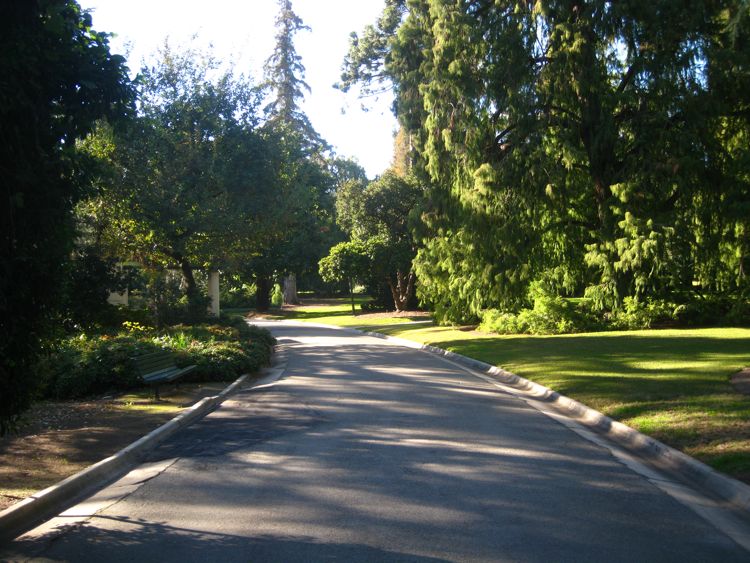
We walked the service road all the way to the Japanese Gardens

The leaves were extremely waxy
The Japanese Garden Form The Back Side
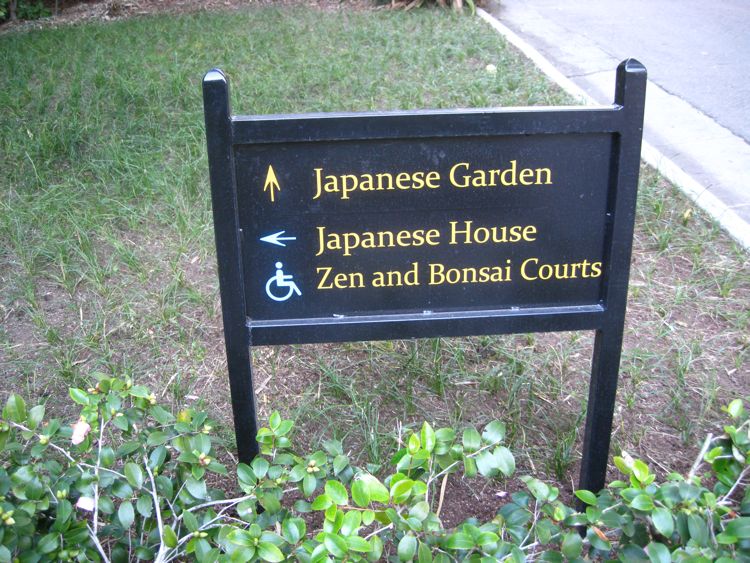
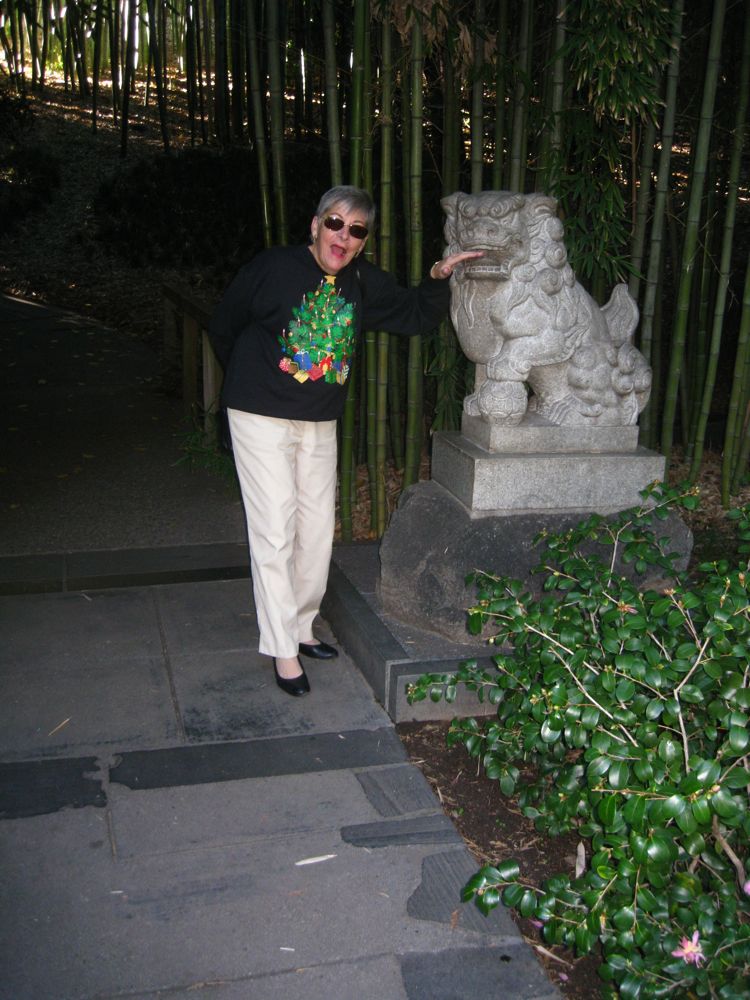
Ouch!
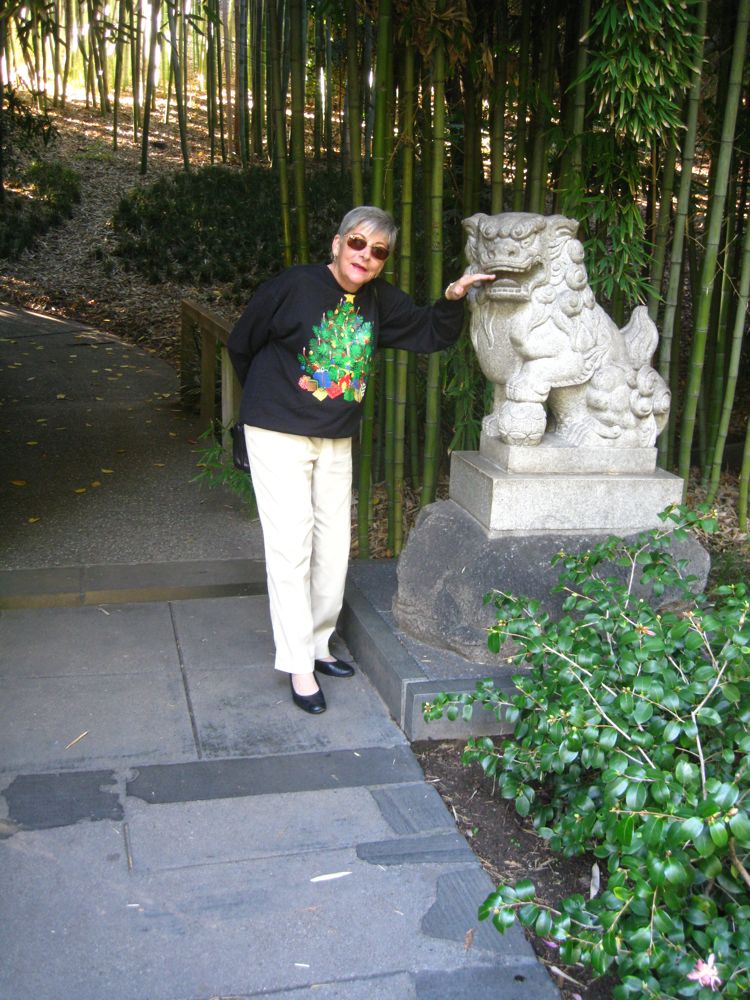
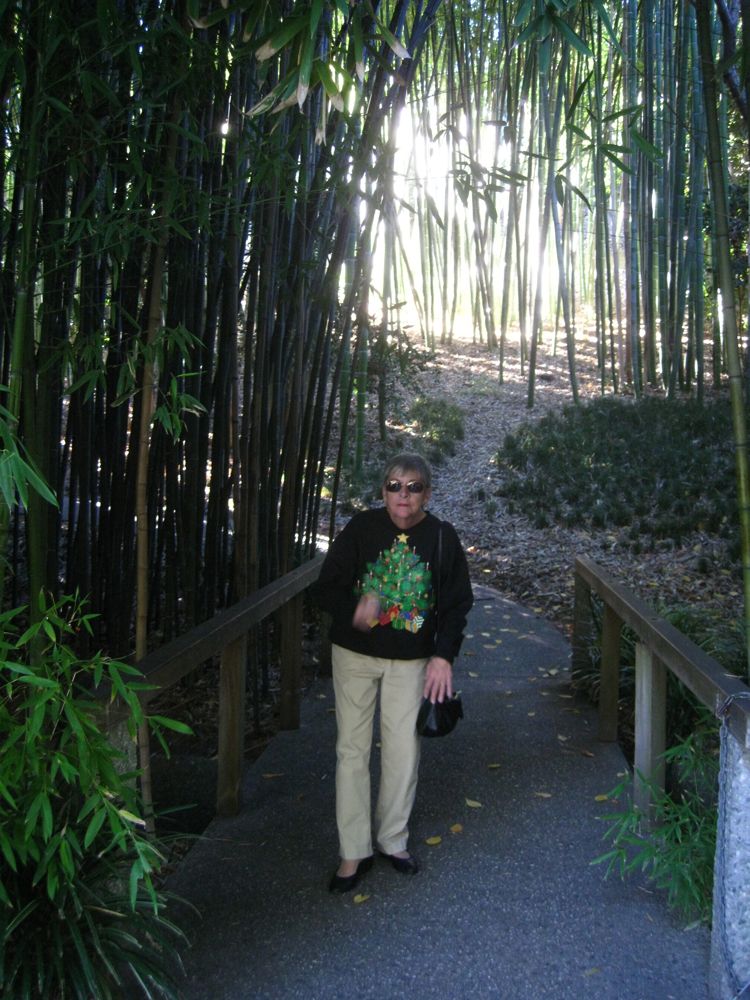
Bamboo Gardens
Did you know? - Bamboo is one of the fastest-growing plants on Earth; it has been measured surging skyward as fast as 100 cm (39 in) in a 24-hour period, and can also reach maximal growth rate exceeding one meter (39 inches) per hour for short periods of time. Primarily growing in regions of warmer climates during the Cretaceous period, vast fields existed in what is now Asia.
Unlike trees, all bamboo have the potential to grow to full height and girth in a single growing season of 3–4 months. During this first season, the clump of young shoots grow vertically, with no branching. In the next year, the pulpy wall of each culm or stem slowly dries and hardens. The culm begins to sprout branches and leaves from each node. During the third year, the culm further hardens.
The shoot is now considered a fully mature culm. Over the next 2–5 years (depending on species), fungus and mould begin to form on the outside of the culm, which eventually penetrate and overcome the culm. Around 5 – 8 years later (species and climate dependent), the fungal and mold growth cause the culm to collapse and decay. This brief life means culms are ready for harvest and suitable for use in construction within 3 – 7 years.
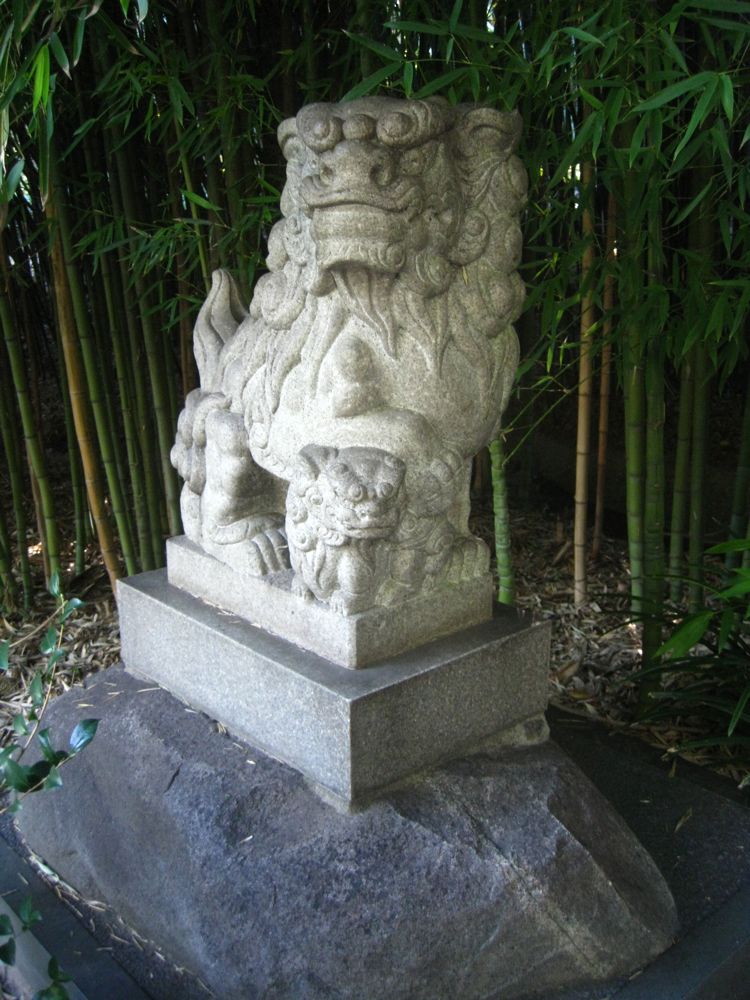
"I don't bite"
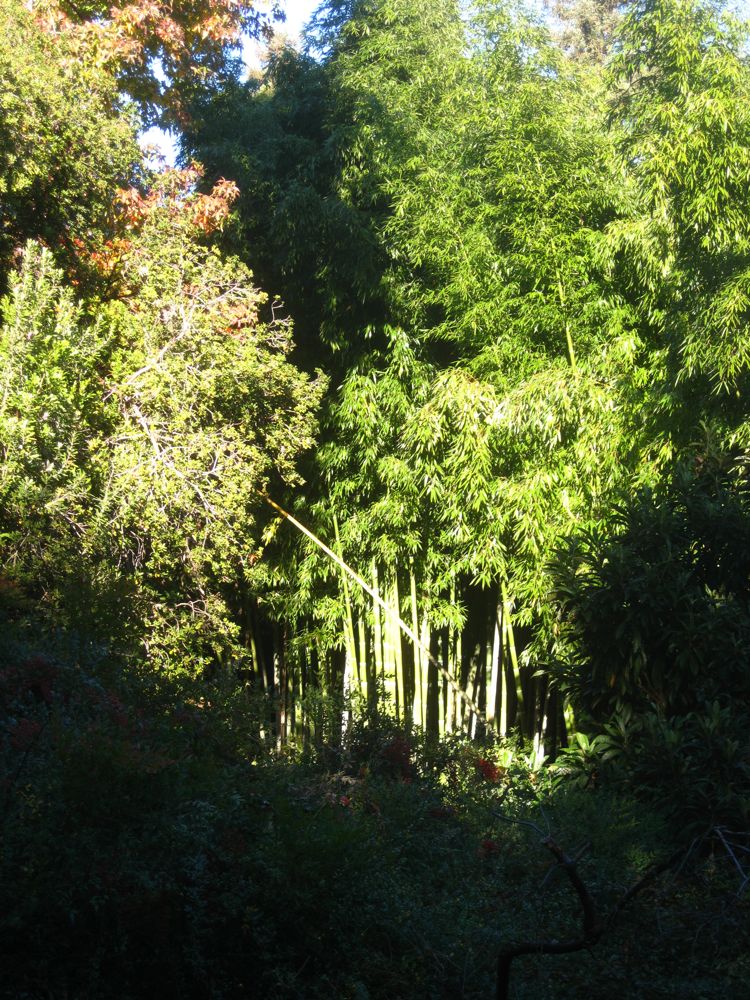
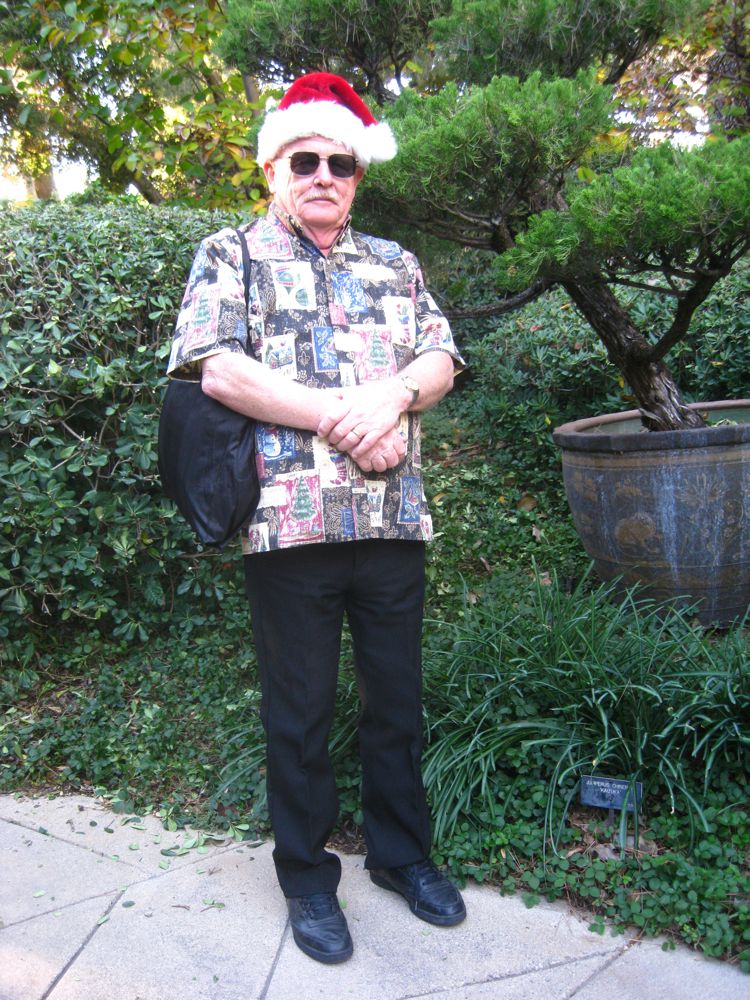
Statue of Budah
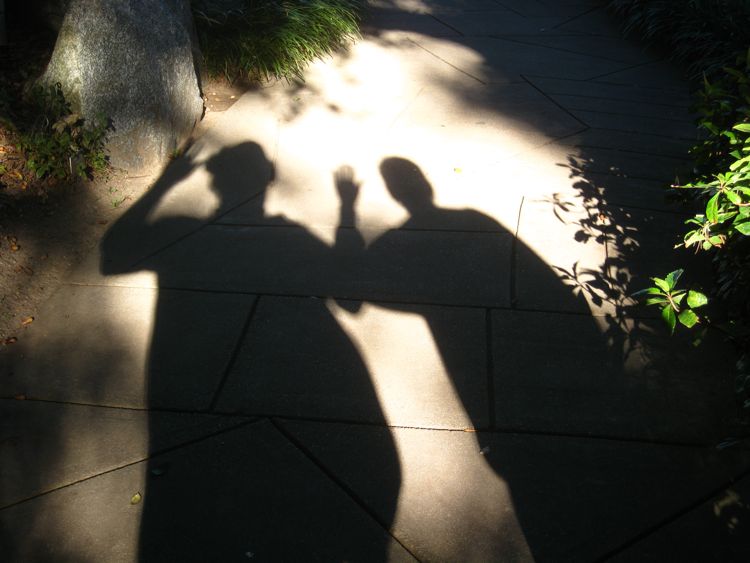
Only The Shadow Knows
Did you know? - The Shadow is a collection of serialized dramas, originally in pulp magazines, then on 1930s radio and then in a wide variety of media, that follow the exploits of the title character, a crime-fighting vigilante with psychic powers.[2] One of the most famous pulp heroes of the 20th century, The Shadow has been featured in comic books, comic strips, television, video games, and at least five motion pictures. The radio drama is well-remembered for those episodes voiced by Orson Welles.
Introduced as a mysterious radio narrator by David Chrisman, William Sweets, and Harry Engman Charlot for Street and Smith Publications, The Shadow was fully developed and transformed into a pop culture icon by pulp writer Walter B. Gibson.
The Shadow debuted on July 31, 1930, as the mysterious narrator of the Street and Smith radio program Detective Story Hour. After gaining popularity among the show's listeners, the narrator became the star of The Shadow Magazine on April 1, 1931, a pulp series created and primarily written by the prolific Gibson.
Over the years, the character evolved. On September 26, 1937, The Shadow radio drama officially premiered with the story "The Deathhouse Rescue", in which the character had "the power to cloud men's minds so they cannot see him." This was a contrivance for the radio; in the magazine stories, The Shadow did not have the ability to become literally invisible; he influenced the minds of his opponents by making them see him a few feet to the right or left of where he really stood. The effect of having this cloaked figure laughing while he was being shot at point-blank range was, at the least, unsettling.
Even after decades, the unmistakable introduction from The Shadow radio program, long-intoned by actor Frank Readick Jr., has earned a place in the American idiom: "Who knows what evil lurks in the hearts of men? The Shadow knows!" These words were accompanied by an ominous laugh and a musical theme, Camille Saint-Saëns' Le Rouet d'Omphale ("Omphale's Spinning Wheel", composed in 1872). At the end of each episode, The Shadow reminded listeners, "The weed of crime bears bitter fruit. Crime does not pay.... The Shadow knows!"
The Bonsai Garden....
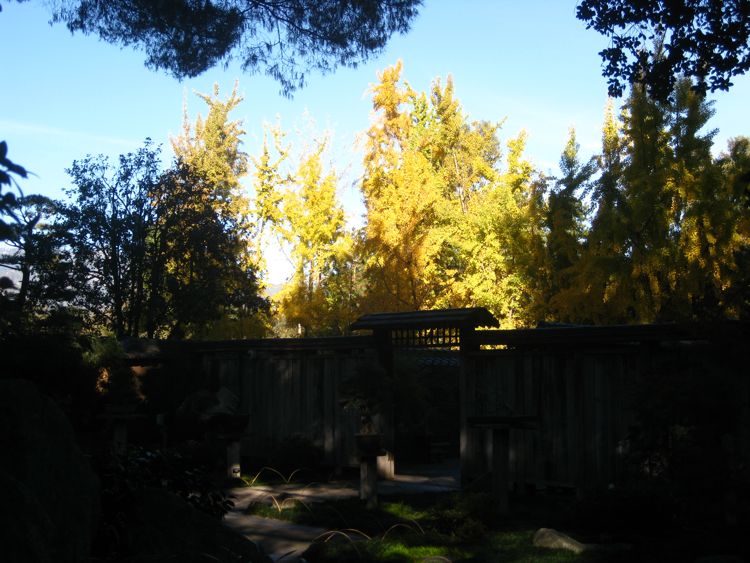
Entrance to the Bonsai gardens
Did you know? - Bonsai (help·info) (盆栽 Japanese) (lit. plantings in tray, from bon, a tray or low-sided pot and sai, a planting or plantings) is a Japanese art form using miniature trees grown in containers. Similar practices exist in other cultures, including the Chinese tradition of penjing and the miniature living landscapes of Vietnamese hòn non bộ. The Japanese tradition dates back over a thousand years, and has evolved its own unique aesthetics and terminology.
'Bonsai' is a Japanese pronunciation of the earlier Chinese term penzai (盆栽). A 'bon' is a tray-like pot typically used in bonsai culture. The word bonsai is often used in English as an umbrella term for all miniature trees in containers or pots, but this article focuses on bonsai as defined in the Japanese tradition.
The purposes of bonsai are primarily contemplation (for the viewer) and the pleasant exercise of effort and ingenuity (for the grower). By contrast with other plant cultivation practices, bonsai is not intended for production of food, for medicine, or for creating yard-sized or park-sized gardens or landscapes. Instead, bonsai practice focuses on long-term cultivation and shaping of one or more small trees in a single container.

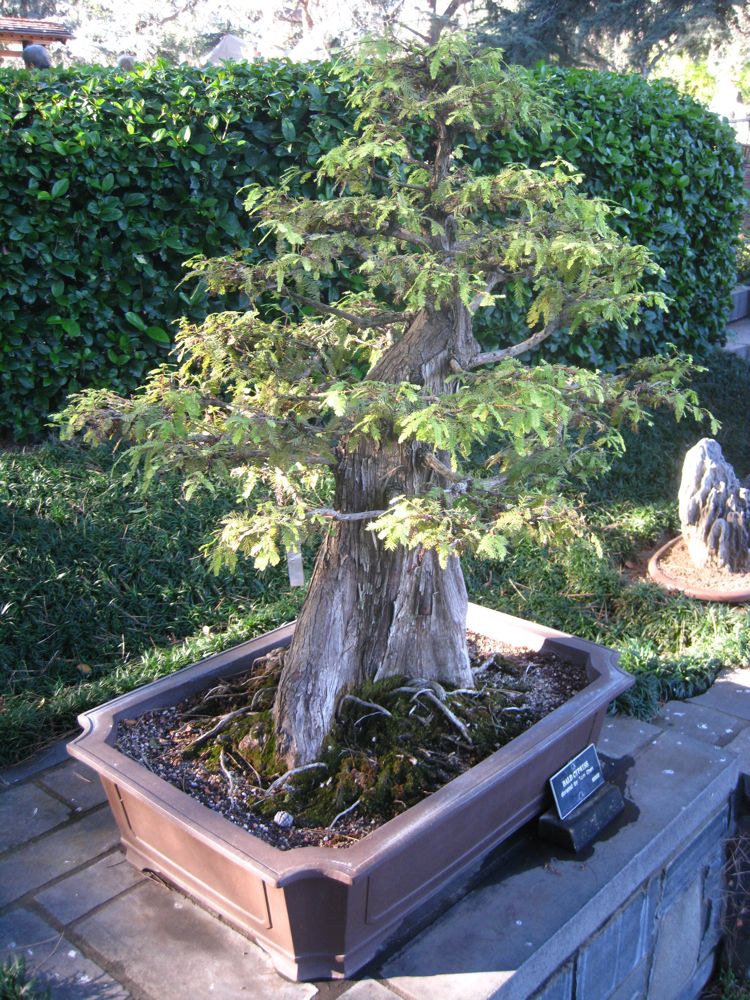
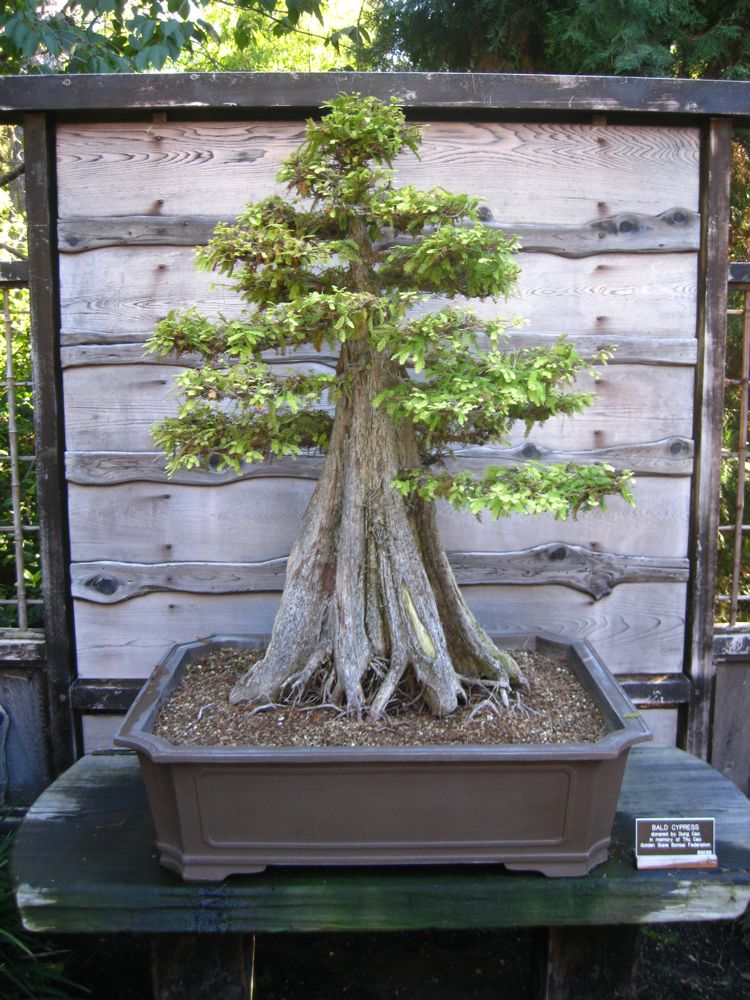
Bald Cypress
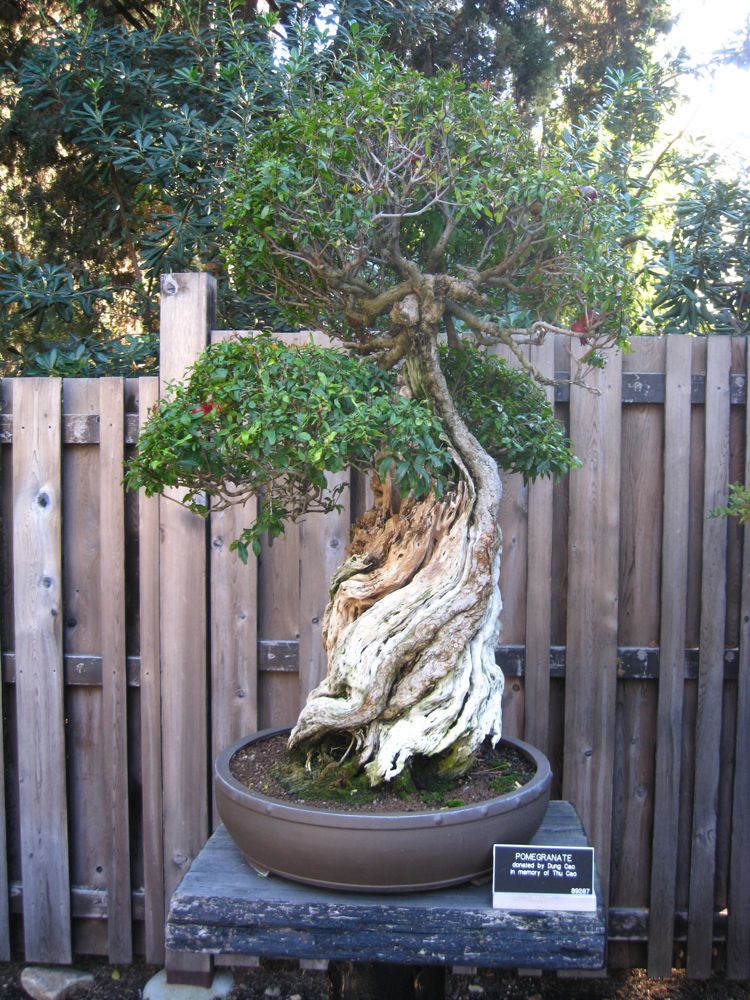
Pomegranate
Did you know? - A pomegranate (Punica granatum) is a fruit-bearing deciduous shrub or small tree growing between five and eight meters tall. The pomegranate is mostly native to the Iranian Plateau and the Himalayas in Northern India. It has been cultivated in the Caucasus since ancient times, and today, is widely cultivated throughout Iran, Azerbaijan, Afghanistan, India, Pakistan, Bangladesh, Iraq, Egypt, China, Burma, Saudi Arabia, Israel, the drier parts of southeast Asia, the Mediterranean region of Southern Europe, and tropical Africa. Introduced into Latin America and California by Spanish settlers in 1769, pomegranate is now cultivated in parts of California and Arizona for juice production.
The name "pomegranate" derives from Latin pomum ("apple") and granatus ("seeded"). This has influenced the common name for pomegranate in many languages (e.g., German Granatapfel, "Granat" meaning "garnet" and "Apfel" meaning "apple", thus "garnet apple"). Perhaps stemming from the French word for the fruit, "pomme-grenade", the pomegranate was known in early English as "apple of Grenada" -- a term which today survives only in heraldic blazons. This was probably a folk etymology, confusing Latin granatus with the Spanish city of Granada.
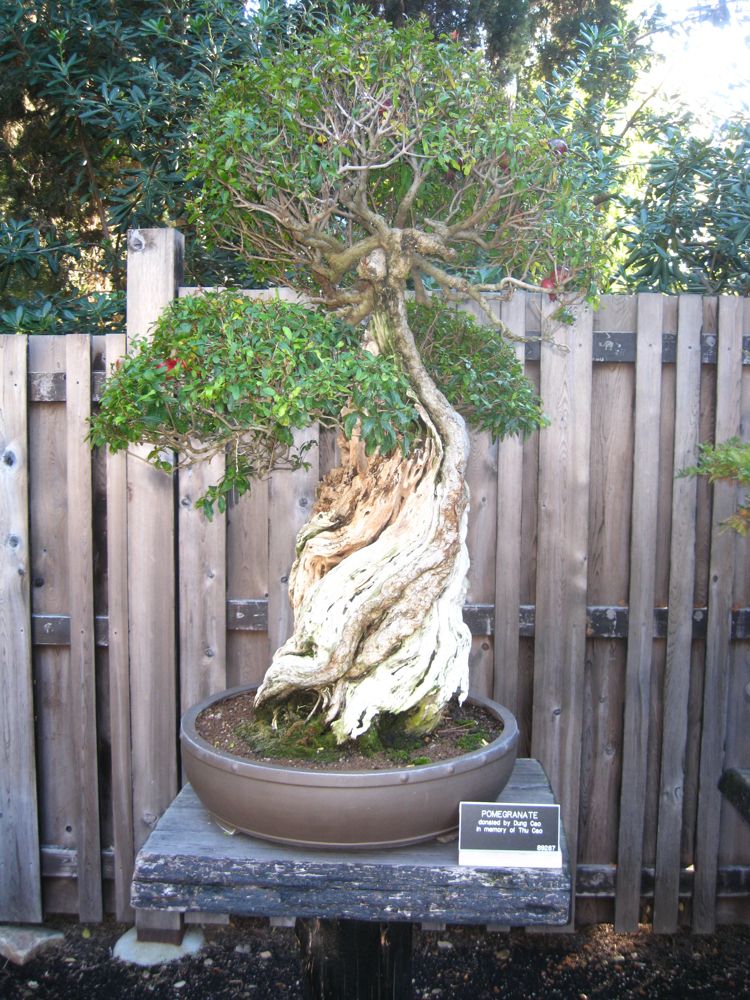
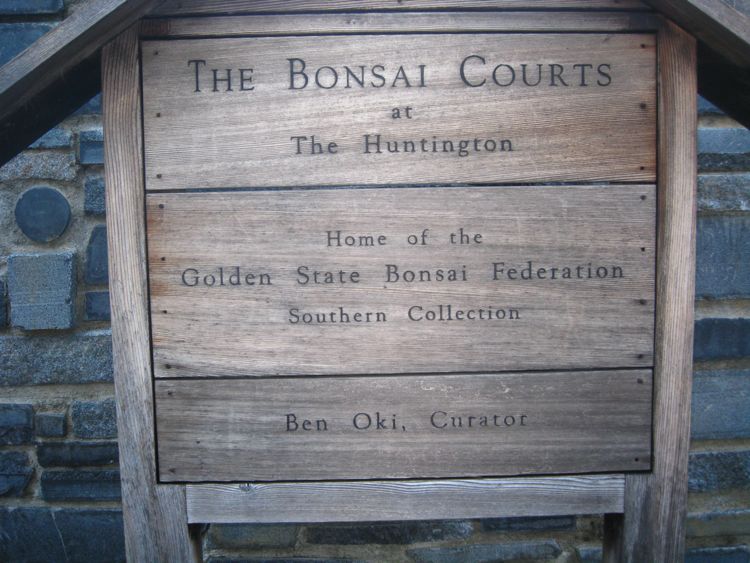
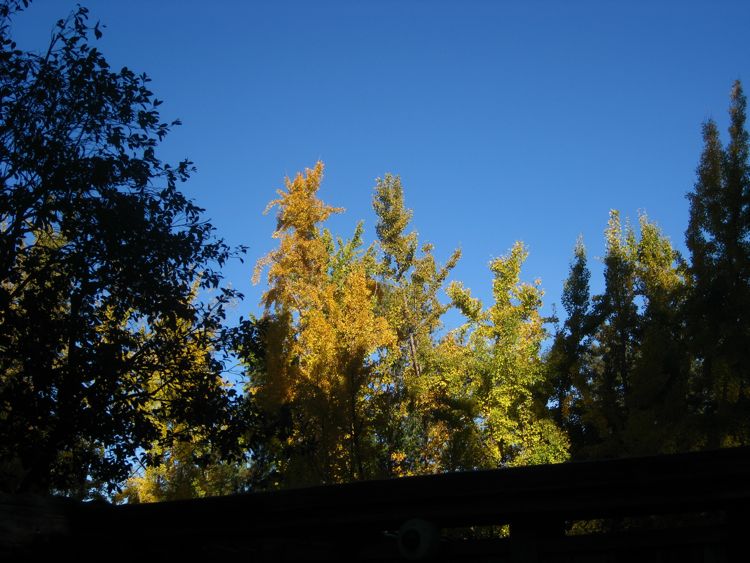
Some of the trees were bright yellow today



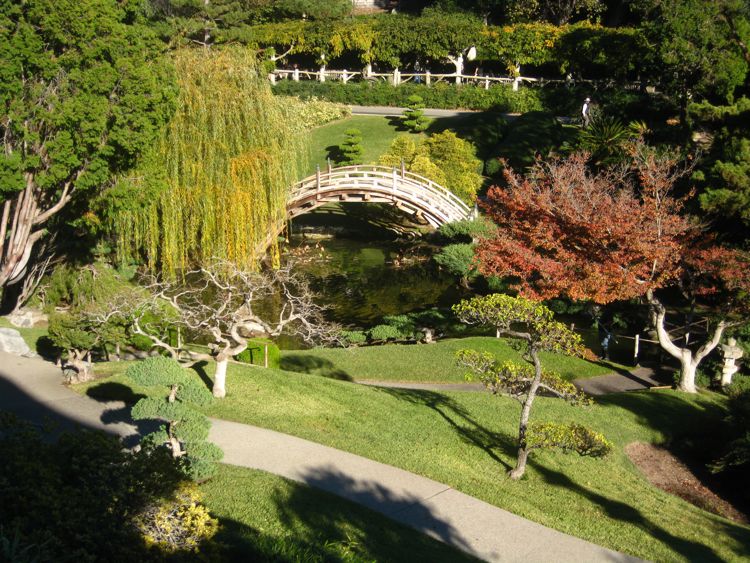
Looking accross from the Japanese house

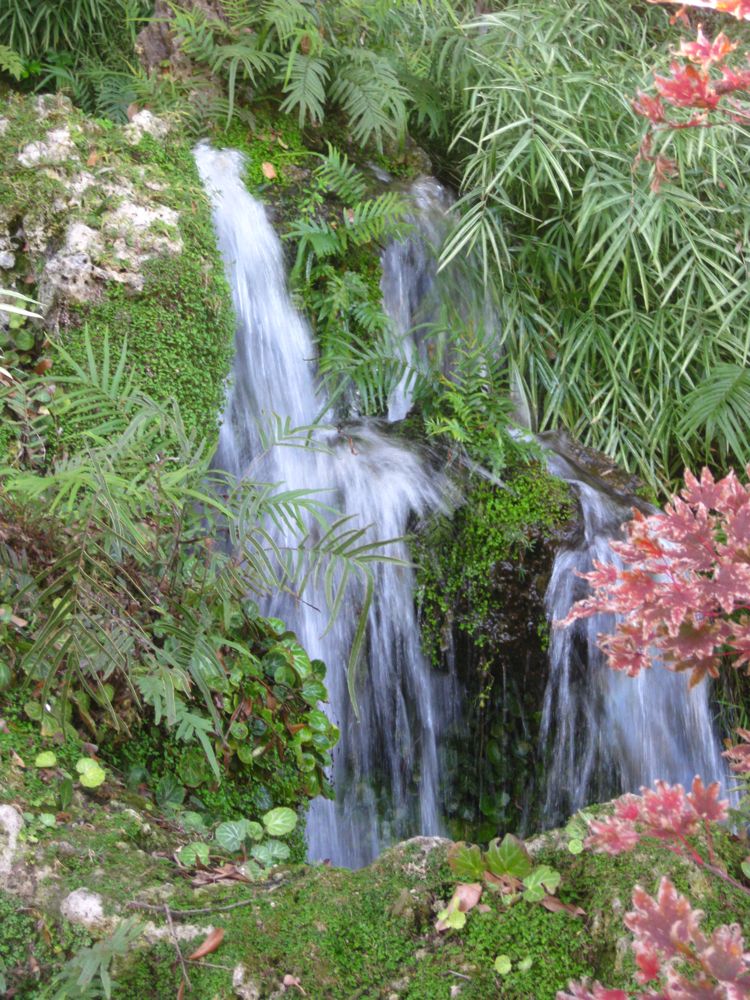
The sounds of water were very pleasing
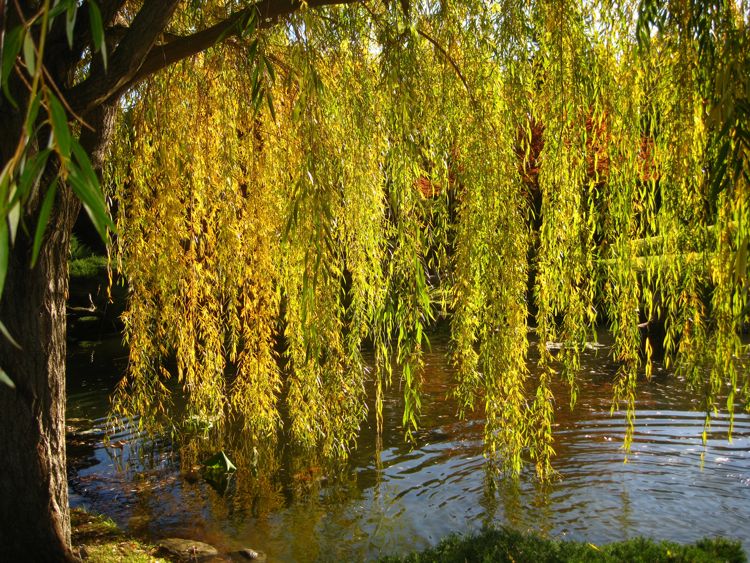
We Enter The Chinese Garden
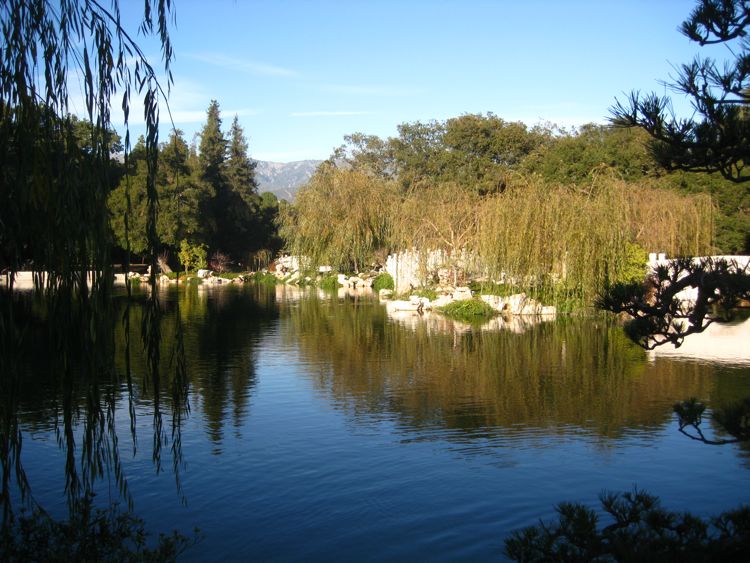
We ate an egg roll while relaxing
Did you know? - An egg roll is an appetizer and dinner, a variant of spring roll, which was originally eaten in East Asia but has spread throughout the world as a staple of Asian cuisine. Many Asian countries are claimed to have originated the dish, and variants of the egg roll exist in multiple Asian cuisines. Although Southern China is claimed to be a source, as it stems from features of Cantonese cuisine, egg rolls are actually not eaten there as a traditional dish. Egg rolls with fillings are commonly served in Vietnamese cuisine.

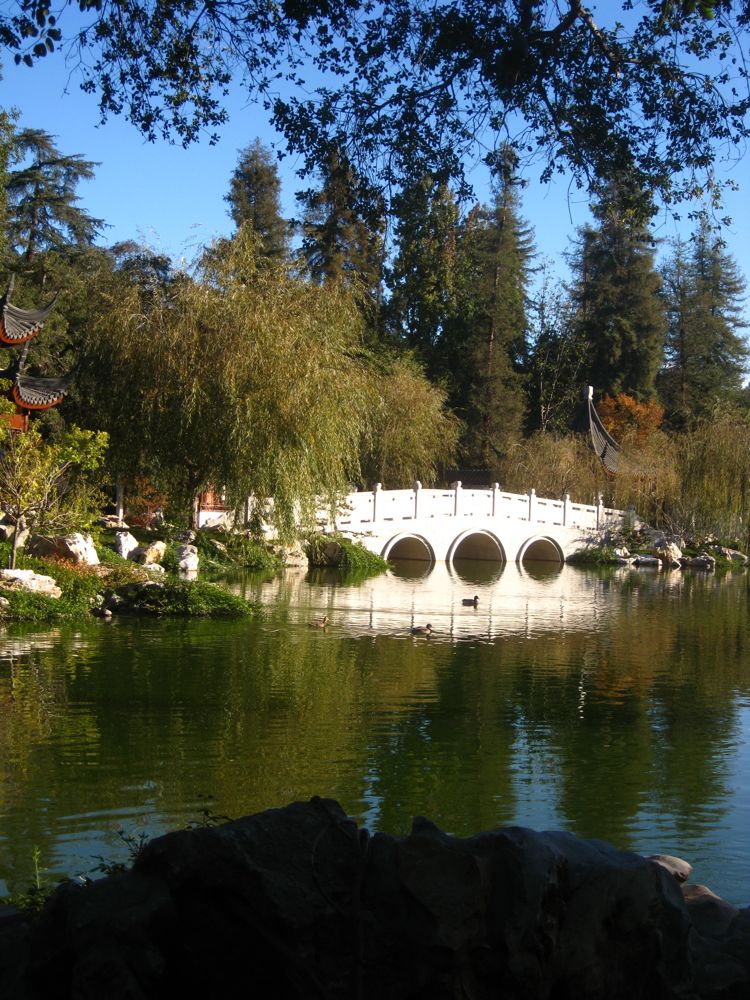
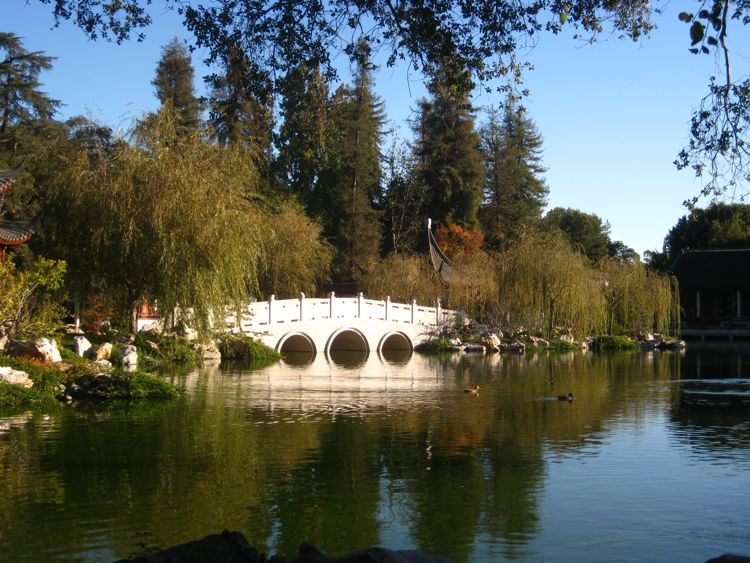

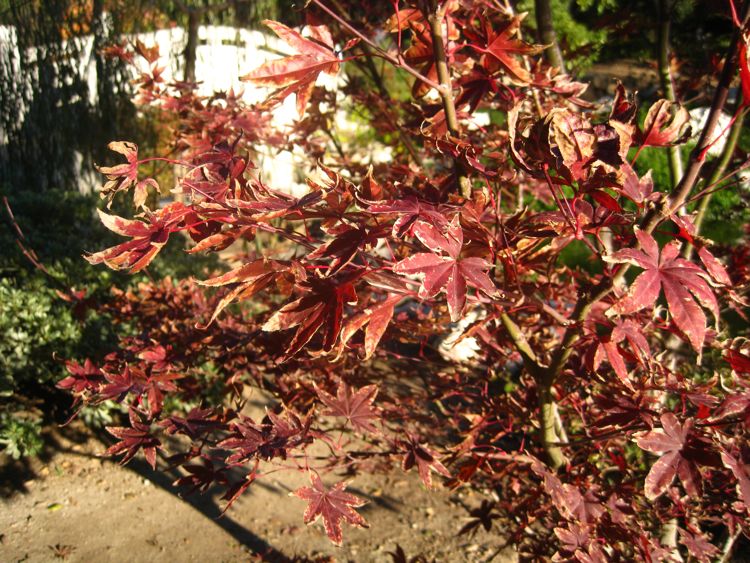
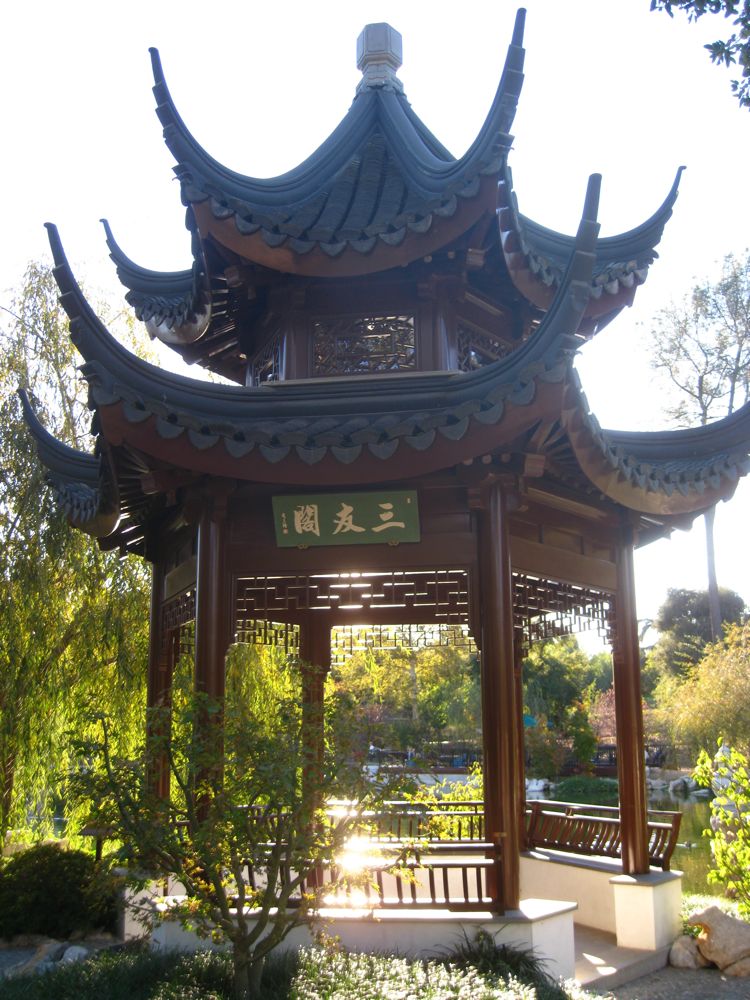
Heading For The Tea Room We Stopped At The Glass House
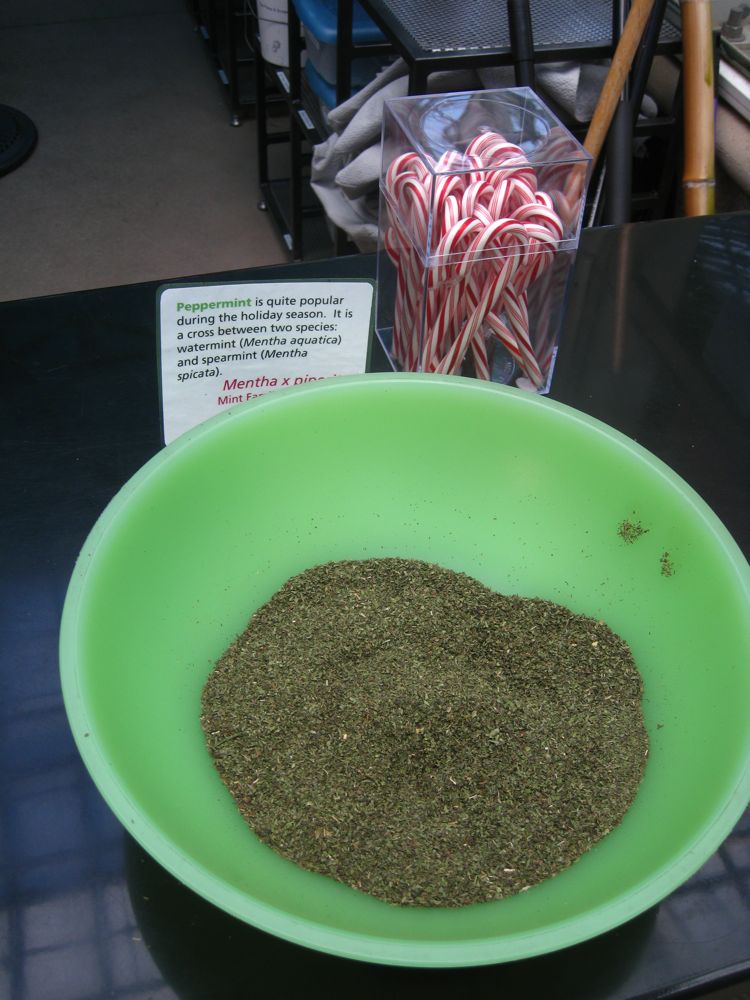
Did you know? - Peppermint (Mentha × piperita, also known as M. balsamea Willd.) is a hybrid mint, a cross between the watermint (Mentha aquatica) and spearmint (Mentha spicata). The plant, indigenous to Europe, is now widespread in cultivation throughout all regions of the world. Peppermint typically occurs in moist habitats, including stream sides and drainage ditches. Being a hybrid, it is usually sterile, producing no seeds and reproducing only vegetatively, spreading by its rhizomes. If placed, it can grow anywhere, with a few exceptions.

The rose arbor

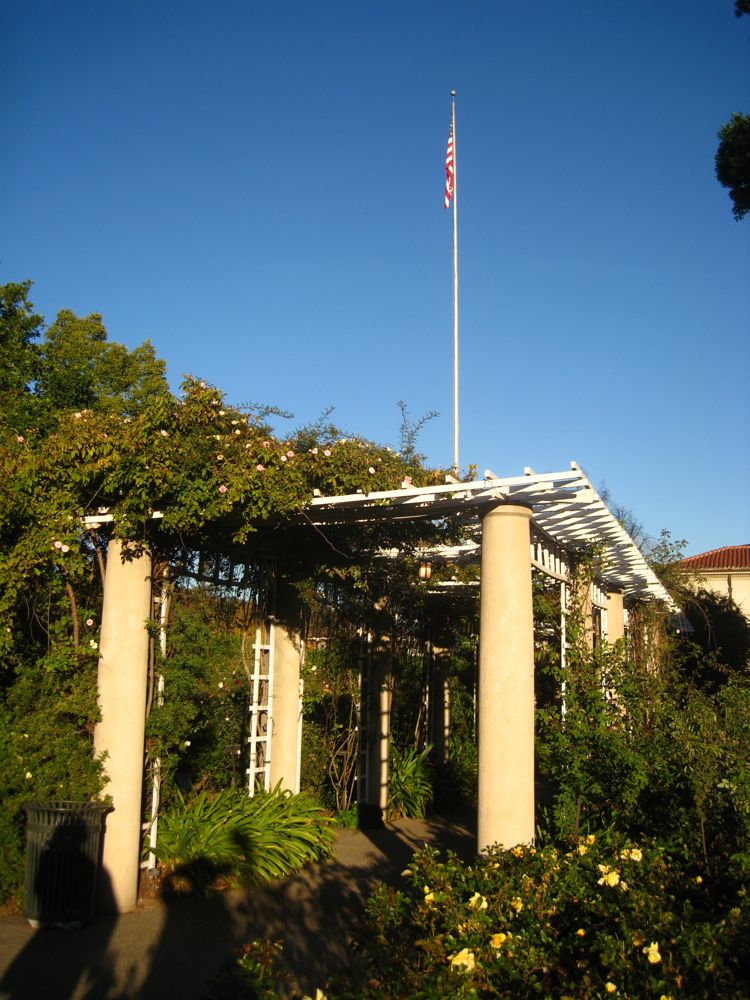
We Enjoyed A Delicious Meal And Plenty Of Tea And Scones
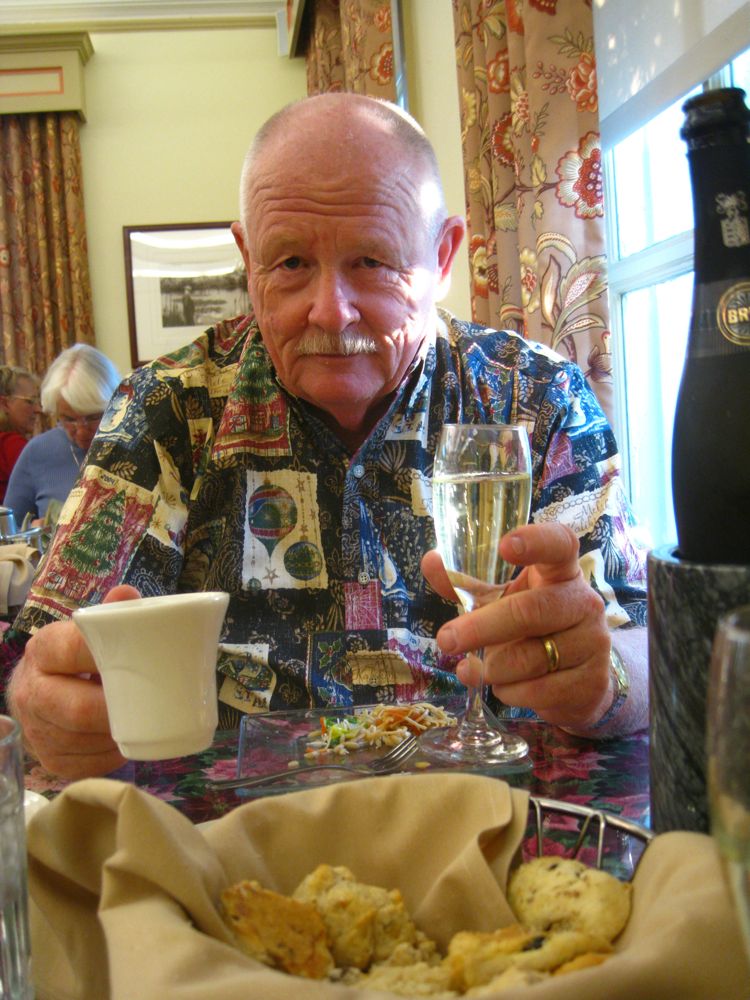
Two fisted drinker
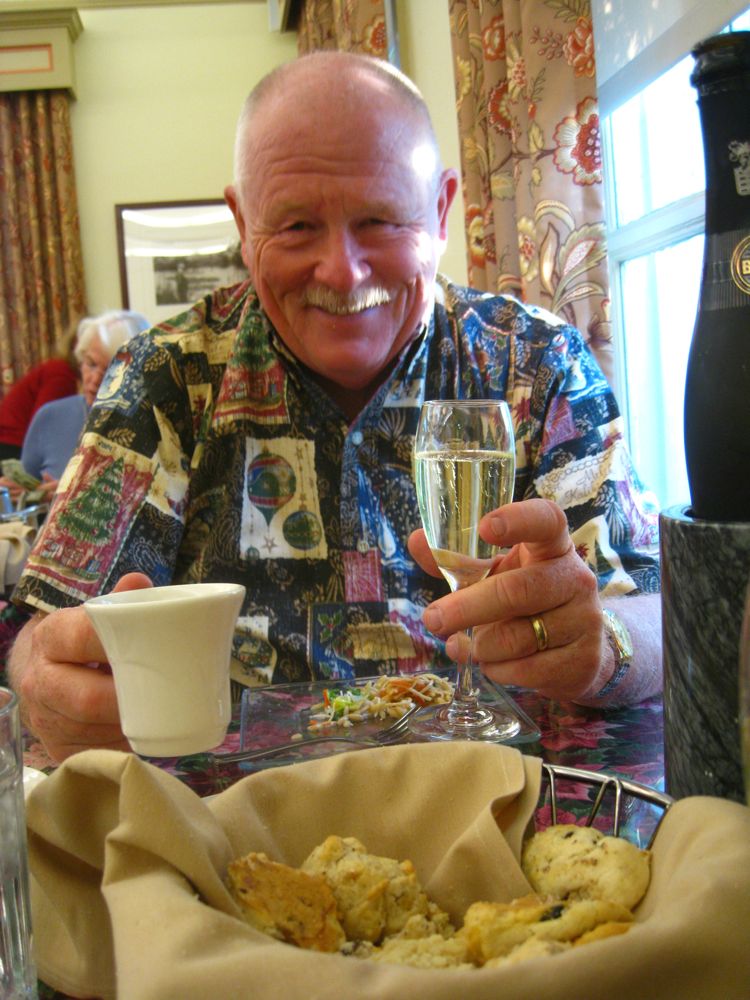

Heading For Home... It Took 90 Minutes At 6:00 PM

90 minutes... Not 39!!!
After We Got Home We Watched A Christmas Movie
When we got home, we turned on Hallmark for a great Christmas movie entitled “The Christmas Card“. US Army sergeant Cody Cullen’s horror tour in Afghanistan ends when his mate Jonesy is blown to pieces while they deliver medical supplies in Nurestan. Cody is sent home to return private possessions to Jonesy’s bride turned widow. On his way home he passes Nevada City, California, where he meets Faith Spelman, who writes the parish’s Christmas cards to lonely soldiers, coincidentally including him, an orphan. He happens to save her dad Luke from a serious car run-over. The Spellmans invite Cody home for dinner, then the Christmas tide. He proves a great help in the family logging firm. Vietenam vet Luke wants Cody as son-in-law, but although charmed, Faith still seems committed to rarely present fiancé Paul, a wine broker.
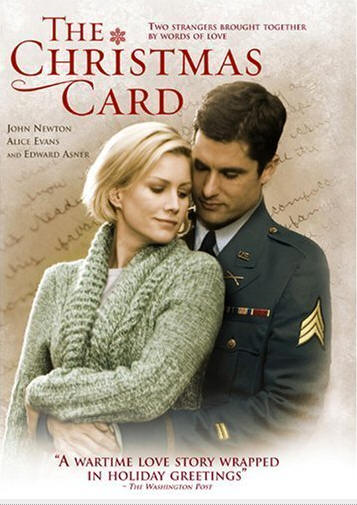
Proceed to 11/30.2010 - Golf And Cerritos Performing Arts Center
